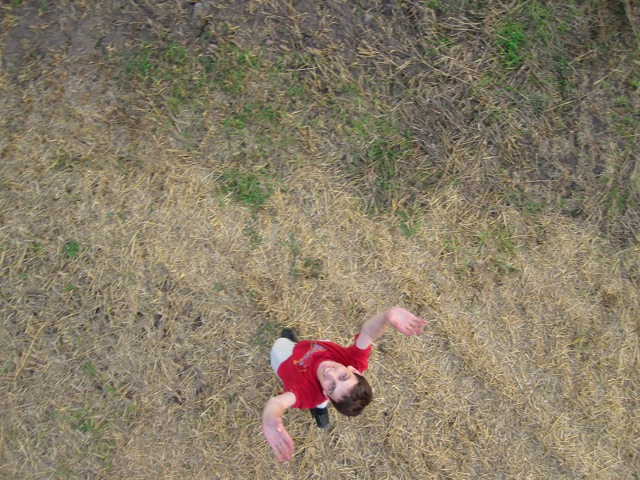This weekend was OSM workshops again, this time we were at a sort of a travellers get-together / summit / festival thing in Boruszyn, Poland. This is a tiny village where Kazimierz Nowak set out for his 40000km bicycle trip across Africa in 1931. The village was mostly unmapped before the festival and there was no usable imagery better than Landsat, so we got to use the pool of GPSes that the OSM Poland association received from Mio Technology Ltd. They are some of the cheapest loggers available, Holux M-1000C, but they worked almost fine for us. The main downside for me was lack of Linux support for downloading the tracks or setting receiver configuration. The BT747 project as well as gpsbabel and mtkbabel all claim to support the M-1000C model but apparently the download protocol is different across different revisions of this model, other people’s comments on the web reflect this too. We had to use a Windows laptop with the ezTour program that ships with the receiver but is tricky to get working too. It also has the annoying default setting of logging GPS points every 5s instead of every second, which gets written to the device whenever it’s connected to the laptop.
We had some bikes and managed to add a lot of detail in nearby villages in OSM. Some teens of the local scouts team that was helping in the festival organisation also joined the workshop and I could pick their brains about more things in the area to add to the map.
We managed to snap some kite imagery on the last day. Technically we only made some slight errors but the timing was unfortunate because a bunch of attendees had already left before then, and the previous two days saw no wind.
Personally I was amazed by the travel stories of some of the attendees. Many of the people there had been to Mt. Everest, some had biked across Siberia or South America or canoed across the Pacific, and one person ran around the globe (yes) over almost a year running a distance of over 2 marathons every day.




 a small town with a very active club of cardboard box makers. The club members make and supply cardboard boxes for the town's people and the people are mostly happy with that. There are some other box suppliers, but their boxes are not recyclable and are actually closed, so you can't put your Garmin GPS in one of those boxes. You need an open box to do that and the Cardboard Box Club makes such boxes.
a small town with a very active club of cardboard box makers. The club members make and supply cardboard boxes for the town's people and the people are mostly happy with that. There are some other box suppliers, but their boxes are not recyclable and are actually closed, so you can't put your Garmin GPS in one of those boxes. You need an open box to do that and the Cardboard Box Club makes such boxes.